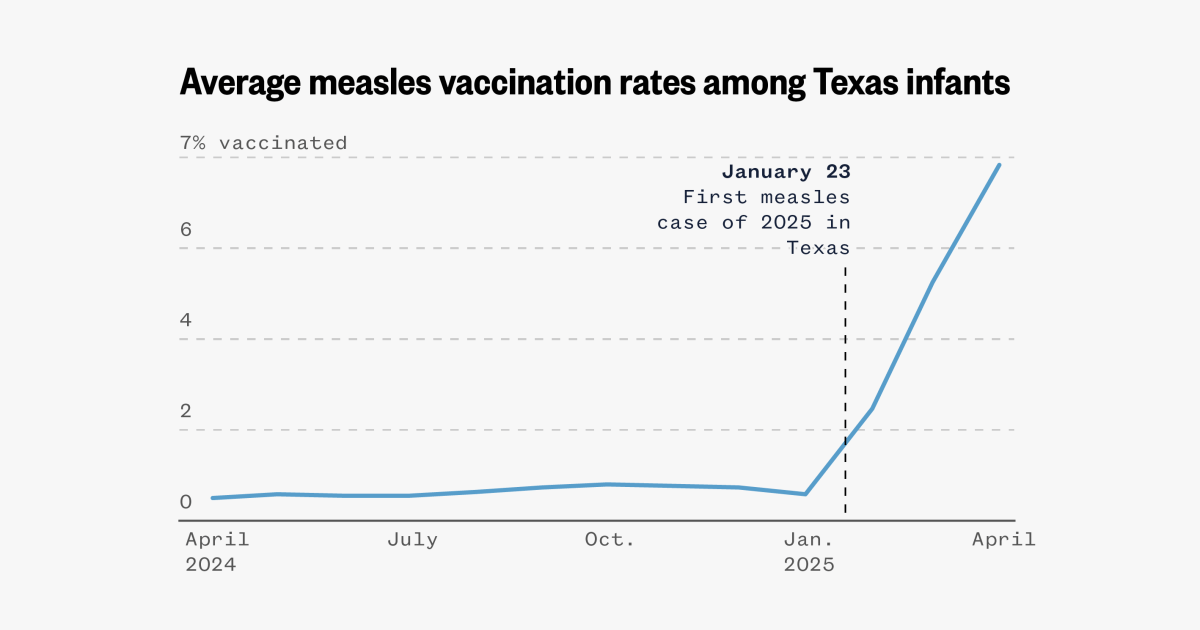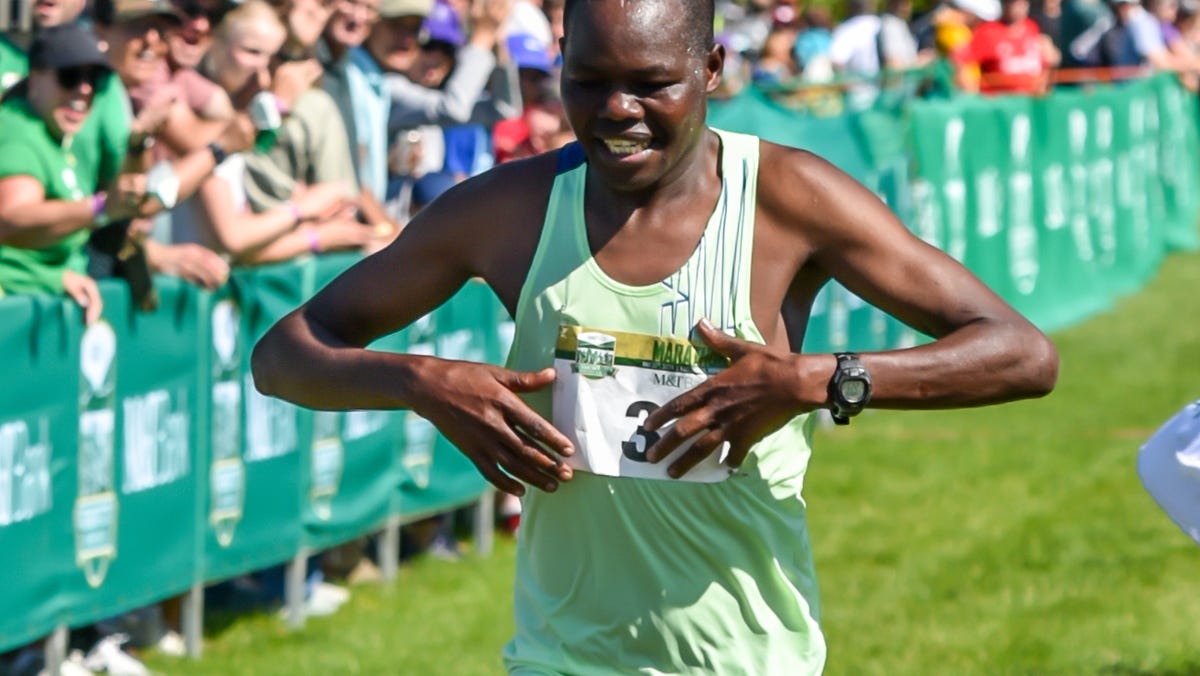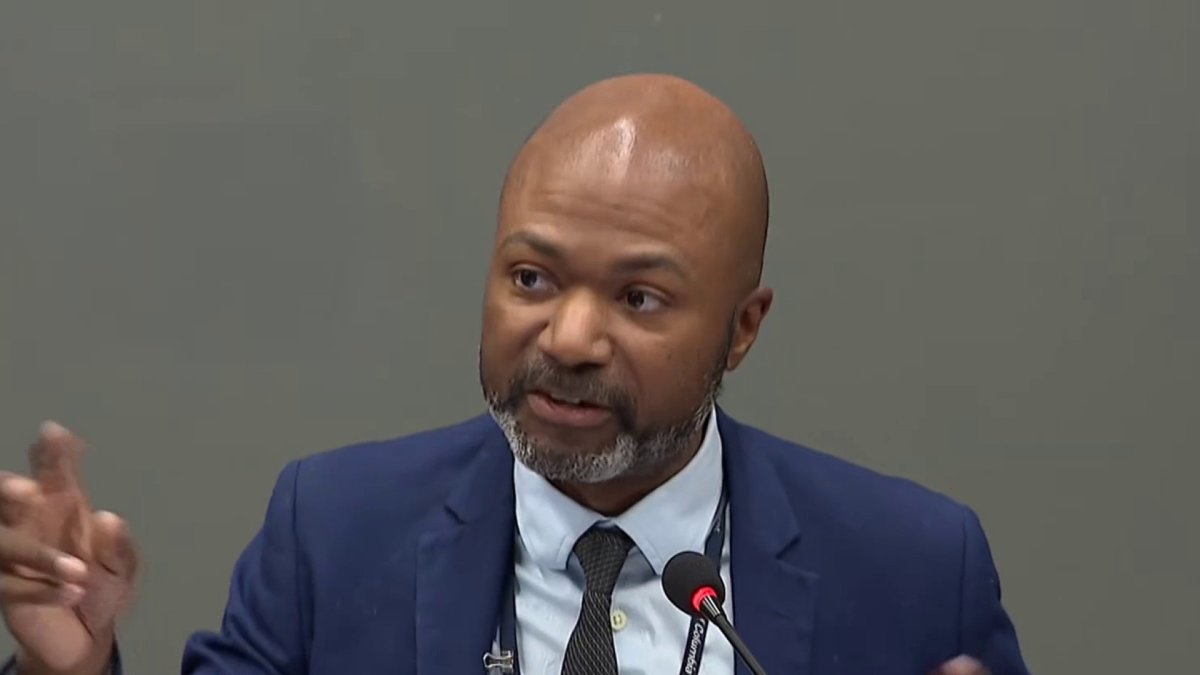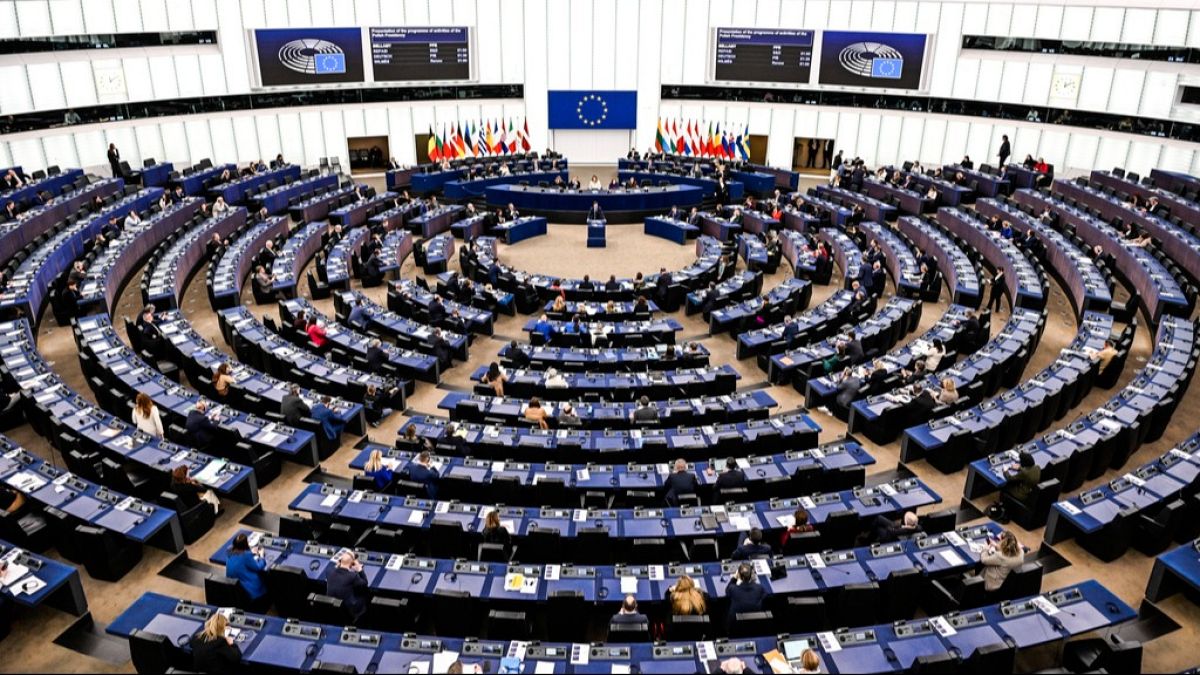New York
White House Urges Eligible Immigrants to Apply for Work Permits

President Biden, under pressure to address a surge of migrants who are overwhelming resources in New York and several other American cities, is ramping up efforts to ensure that some of those people can get jobs — a move designed to ease the spiraling political and financial costs of the crisis.
After more than two years in which his administration has struggled to find short-term solutions to an immigration system that has been badly broken for decades, Mr. Biden now faces demands from within his own party to confront the consequences of that migration, hundreds of miles from the border with Mexico.
Under federal law, migrants have to wait about six months after they file their asylum applications to apply for permission to work in the United States. The requirement has vexed cities like New York, where thousands of people have taken refuge in shelters, straining the system.
Some people who come into the United States legally through special programs are able to request work permits immediately, but they do not always do so. The Biden administration is focusing on those people in a new campaign.
In the last week, federal officials have sent more than one million text messages to migrants across the country who are eligible for permits to work in the United States but have not yet applied for them. Officials say the messages, which are sent in English, Spanish, Haitian Creole, Russian and other languages, are a “first-of-its-kind national campaign” by the federal government.
In addition, they have distributed fliers with QR codes to be posted at residential facilities, shelters, legal services clinics and other public places where new arrivals gather. Migrants can scan the codes with their phones to get information about how to download work authorization documents.
Administration officials said they did not have the official number of migrants in the country who are eligible for work permits but have not applied. But they said the government has distributed close to $770 million in grants to localities, including about $140 million to New York, to bolster services for the migrants. The administration has asked Congress for another $600 million in supplemental funding for this year, and $800 million for next year.
The efforts are a direct response to angry frustration voiced by Democratic leaders like Kathy Hochul, the governor of New York, and the mayors of some of the country’s biggest cities. Eric Adams, the mayor of New York City, declared on Thursday that the cost of caring for more than 100,000 new arrivals could reach $12 billion over three years and “will destroy New York City.”
The issue of how to deal with migrants, and who should shoulder the cost of caring for them in the short term, has led to a fierce and public intraparty spat in the midst of Mr. Biden’s re-election campaign.
Local officials have said the funding and the steps to allow migrants to work do not go far enough. And Republicans who backed former President Donald J. Trump’s tough immigration measures are now seizing on the comments from top Democrats, happily quoting those in New York who say the Biden administration must do more to secure the border.
In response, Mr. Biden and his top aides say Republicans are to blame for refusing to even consider proposals that the president made on his first day in office for a broad overhaul of the nation’s immigration laws. Conservative Republicans have blocked bipartisan efforts to modernize the system for decades.
The political repercussions of a continued migrant crisis have heightened tensions inside the Biden administration. According to emails reviewed by The New York Times, officials have worried for months about the impact of increased migration on big cities, where many migrants head once they cross the border.
The decision by two Republican governors, Greg Abbott of Texas and Ron DeSantis of Florida, to ship thousands of migrants on buses to New York, the District of Columbia and other locations added to the concern and led the local and state officials — all Democrats — to publicly air their anger over the situation.
One key demand from Ms. Hochul and Mr. Adams in recent weeks has been for the federal government to take actions to allow more of the immigrants to work in the United States. That would allow them to leave public shelters and provide for themselves.
Ms. Hochul made that case to Jeff Zients, the White House chief of staff, during a meeting last week. Afterward, the White House released a statement saying that “the administration will work with New York State and New York City on a month of action to help close the gap between noncitizens who are eligible for work authorization and those who have applied, to meet labor needs in New York.”
The issue has been building for months.
When Mr. Biden announced in January a new program that would open the borders to 30,000 migrants each month from Cuba, Haiti, Nicaragua and Venezuela, he hailed it as a humane and orderly way to limit surges in migration and prevent dangerous overcrowding at the border with Mexico.
But his administration did not anticipate that many of those migrants would not immediately apply for work permits despite being eligible, leaving tens of thousands of people seeking housing, medical care and other costly support from the cities they settled in across the United States.
Only last week — under pressure from New York, where many of the migrants were bused by Republican governors — did the administration launch a concerted effort to get those migrants to sign up for permission to work.
Administration officials said Friday that getting more of the recent migrants to seek work authorization was unlikely to solve the entire problem in New York, where local laws require the city government to provide housing for any migrant who needs it, even if it means putting them up in costly hotels.
The so-called right-to-shelter law in New York is a powerful “pull factor,” administration officials said, attracting migrants who are otherwise unsure where to go after they get to the United States. Officials at the White House and the Department of Homeland Security say they admire the humanity of the law but acknowledge that it adds to the city’s burden in a way that the federal government cannot control.
The effort to deal with the needs of migrants after they spread out to cities is also hampered by a lack of information about who they are and where they go, officials said.
People who enter the United States often tell the authorities where they intend to go after leaving the border. But that is often only their first stop, and they do not stay there. D.H.S. officials said they did not know exactly how many of the 110,000 migrants who arrived in New York City in the last year were currently eligible for work permits.
Some might have come into the United States legally, through a program that allows them to stay in the country for up to two years if they are fleeing from Cuba, Haiti, Nicaragua or Venezuela. Others might have used a new Customs and Border Protection app to make appointments at the border, which also gives them the right to work.
But others who found their way to New York City may be what the border authorities call “gotaways,” people who slipped by the authorities at the border and made their way to their final destination without being caught. Those people would not be eligible for work permits because they entered the United States illegally.
Migrants who came to the United States illegally and have since started the process to claim asylum are required by law to wait 150 days before applying for a work permit. It takes a minimum of another 30 days before they can begin to work, and the current backlog in processing time sometimes takes weeks longer.
Individuals who are close to the 150-day threshold are among those being targeted by the text messages and QR codes, officials said.
Eileen Sullivan contributed reporting.

New York
Video: How a Mexican Navy Ship Crashed Into the Brooklyn Bridge

On Saturday, a Mexican Navy ship on a good will tour left a New York City pier bound for Iceland. Four minutes later, it crashed into the Brooklyn Bridge. [Spanish] “It’s falling!” [English] “No way!” Here’s what happened. The Cuauhtémoc had been docked on the Lower East Side of Manhattan for four days, open to visitors looking for a cultural experience. As the ship prepared to leave on Saturday night, a tugboat arrived to escort it out of its pier at 8:20 p.m. The ship’s bow, the front of the vessel, faced Manhattan, meaning it would need to back out of its berth into the East River. As the Cuauhtémoc pulled away from shore, the tugboat appeared to push the side of the ship, helping to pivot the bow south toward its intended route. The river was flowing northeast toward the Brooklyn Bridge and the wind was blowing in roughly the same direction, potentially pushing the ship toward a collision. Photos and videos suggest the tugboat was not tied to the ship, limiting its ability to pull the ship away from the bridge. The Cuauhtémoc began to drift north, back first, up the river. Dr. Salvatore Mercogliano, who’s an adjunct professor at the U.S. Merchant Marine Academy, told The Times that the ship appeared to be giving off a wake. This suggests its propellers may have been running in reverse, pushing it faster toward the bridge. The tugboat sped alongside the ship as it headed north, possibly trying to get in front of it and help the ship maneuver the other way. But it was unable to cut the ship off or reverse its course. All three masts crashed into the underside of the Brooklyn Bridge at approximately 8:24 p.m., four minutes after the ship had left the pier, causing the top sails to collapse. Crew members standing on the masts during the collision were thrown off entirely. Others remained hanging from their harnesses. A New York City patrol boat arrived about eight minutes after the collision, followed quickly by a fire department boat. Additional law enforcement and emergency medical services removed the wounded for treatment. According to the Mexican Navy, two of the 227 people aboard the ship were killed and 22 others were injured.
New York
Audio Data Shows Newark Outage Problems Persisted Longer Than Officials Said

On April 28, controllers at a Philadelphia facility managing air traffic for Newark Liberty International Airport and smaller regional airports in New Jersey suddenly lost radar and radio contact with planes in one of the busiest airspaces in the country.
On Monday, two weeks after the episode, Sean Duffy, the secretary of transportation, said that the radio returned “almost immediately,” while the radar took up to 90 seconds before it was operational.
A Times analysis of flight traffic data and air traffic control feed, however, reveals that controllers were struggling with communication issues for several minutes after transmissions first blacked out.
The episode resulted in multiple air traffic controllers requesting trauma leave, triggering severe flight delays at Newark that have continued for more than two weeks.
Several exchanges between pilots and controllers show how the outage played out.
Outage Begins
Air traffic recordings show that controllers at the Philadelphia facility first lost radio and radar communications for about a minute starting just before 1:27 p.m., after a controller called out to United Flight 1951, inbound from Phoenix.
The pilot of United 1951 replied to the controller’s call, but there was no answer for over a minute.
1:26:41 PM
Controller
OK, United 1951.
1:26:45 PM
Pilot
Go ahead.
1:27:18 PM
Pilot
Do you hear us?
1:27:51 PM
Controller
How do you hear me?
1:27:53 PM
Pilot
I got you loud and clear now.
Two other planes reached out during the same period as United 1951 — a Boeing 777 inbound from Austria and headed to Newark, and a plane whose pilot called out to a controller, “Approach, are you there?” Their calls went unanswered as well.
Radio Resumes, With Unreliable Radar
From 1:27 to 1:28 p.m., radio communications between pilots and controllers resumed. But soon after, a controller was heard telling multiple aircraft about an ongoing radar outage that was preventing controllers from seeing aircraft on their radarscopes.
One of the planes affected by the radar issues was United Flight 674, a commercial passenger jet headed from Charleston to Newark.
1:27:32 PM
Pilot
United 674, approach.
1:27:36 PM
Controller
Radar contact lost, we lost our radar.
1:30:34 PM
Controller
Turn left 30 degrees.
1:31:03 PM
Pilot
All right, we’re on a heading of 356. …
1:31:44 PM
Controller
I see the turn. I think our radar might be a couple seconds behind.
Once the radio started operating again, some controllers switched from directing flights along their planned paths to instead providing contingency flight instructions.
At 1:28 p.m., the pilot of Flight N16NF, a high-end private jet, was called by a controller who said, “radar contact lost.” The pilot was then told to contact a different controller on another radio frequency.
About two and a half minutes later, the new controller, whose radar did appear to be functioning, instructed the pilot to steer towards a location that would be clear of other aircraft in case the radio communications dropped again.
Flight N426CB, a small private jet flying from Florida to New Jersey, was told to call a different radio frequency at Essex County Airport, known as Caldwell Airport, in northern New Jersey for navigational aid. That was in case the controllers in Philadelphia lost radio communications again.
1:27:57 PM
Controller
If for whatever reason, you don’t hear anything from me further, you can expect to enter right downwind and call Caldwell Tower.
1:29:19 PM
Controller
You just continue on towards the field. They’re going to help navigate you in.
This is in case we are losing our frequencies.
1:29:32 PM
Pilot
OK, I’m going over to Caldwell. Talk to you. Have a good afternoon.
Minutes Later, Radar Issues Persist
According to the Federal Aviation Administration, aircraft reappeared on radarscopes within 90 seconds of the outage’s start, but analysis of air traffic control recordings suggest that the radar remained unreliable for at least some radio frequencies for several minutes after the outage began around 1:27 p.m.
At 1:32 p.m., six minutes after the radio went quiet, Flight N824TP, a small private plane, contacted the controller to request clearance to enter “Class B” airspace — the type around the busiest airports in the country. The request was denied, and the pilot was asked to contact a different radio frequency.
1:32:43 PM
Pilot
Do I have Bravo clearance?
1:32:48 PM
Controller
You do not have a Bravo clearance. We lost our radar, and it’s not working correctly. …
If you want a Bravo clearance, you can just call the tower when you get closer.
1:32:59 PM
Pilot
I’ll wait for that frequency from you, OK?
1:33:03 PM
Controller
Look up the tower frequencies, and we don’t have a radar, so I don’t know where you are.
The last flight to land at Newark was at 1:44 p.m., but about half an hour after the outage began, a controller was still reporting communication problems.
“You’ll have to do that on your own navigation. Our radar and radios are unreliable at the moment,” a Philadelphia controller said to a small aircraft flying from Long Island around 1:54 p.m.
Since April 28, there has been an additional radar outage on May 9, which the F.A.A. also characterized as lasting about 90 seconds. Secretary Duffy has proposed a plan to modernize equipment in the coming months, but the shortage of trained staff members is likely to persist into next year.
New York
Two Men’s Fight to Protect the Geese at the Central Park Reservoir

Whether goslings live or die at the Central Park Reservoir could be up to two 70-something, nature-loving men who first crossed paths there this winter.
Edward Dorson, a wildlife photographer and regular visitor to the reservoir, learned in 2021 that federal workers were destroying the eggs of Canada geese there as part of a government safety program to decrease bird collisions with airplanes. He tried to stop it.
He reached out to animal rights organizations and wrote letters to various government agencies. He got nowhere.
Then in December, he met Larry Schnapf, a tough-talking environmental lawyer, who spotted Mr. Dorson admiring the birds and introduced himself. Mr. Dorson told him about the nest destruction. Mr. Schnapf, in his 40-year legal career, had mostly focused on redeveloping contaminated properties but had picked up the occasional pro bono passion project. “I told him I take on quixotic pursuits,” Mr. Schnapf said.
Now, they are teaming up to protect the eggs of a small population of Canada geese that nest around the reservoir, a popular attraction for joggers and bird watchers. The battle will undoubtedly be uphill: They are lobbying multiple government agencies during a fraught time in aviation where bird strikes are one of many concerns, on behalf of a bird often described as a nuisance because of its honking cries and the droppings it leaves on lawns, parks and golf courses.
The men say they appreciate the importance of protecting planes. But they are seeking to exempt the Central Park Reservoir from the egg destruction program so that it can serve as a sanctuary for the nesting geese. They argue that Central Park is far enough from the area’s airports that the geese do not pose a major problem.
Mr. Schnapf said he plans to send a cease-and-desist letter to the Port Authority of New York and New Jersey, which oversees five major airports in the region, including Kennedy International Airport, Newark Liberty International Airport and LaGuardia Airport. The agency works with an arm of the U.S. Department of Agriculture on the safety program. “I think this is all unlawful,” he said. “These are protected animals.”
Port Authority officials did not comment on the advocacy plans of the two men. But they stressed that government efforts like those underway in Central Park were part of creating safer conditions for air travel.
“Managing wildlife risks — especially from resident Canada geese — near our airports is a life safety imperative and essential to maintaining safe operations,” said Laura Francoeur, the Port Authority’s chief wildlife biologist.
Although Canada geese are protected under the Migratory Bird Treaty Act, authorities have obtained a waiver to control the population. The birds, which can weigh as much as 19 pounds and have a wingspan up to 5.5 feet, according to the Cornell Lab of Ornithology, can get sucked into plane engines and bring an aircraft down.
Between 2008 and 2023, there were 451 aviation accidents involving commercial aircraft in the United States, with a total of 17 caused by bird strikes, producing five injuries and no fatalities, according to the National Transportation Safety Board.
New York City tightened its grip on Canada geese in 2009, after a collision with a flock caused US Airways Flight 1549, piloted by Chesley B. Sullenberger III, to lose both its engines shortly after it took off from LaGuardia. The plane was forced into an emergency water landing in what is now commonly known as the “miracle on the Hudson.”
The event prompted the Port Authority to ask the Department of Agriculture for help. In 2010, federal wildlife workers took on the management of Canada geese populations within seven miles of the city’s major airports, including in city parks.
Mr. Schnapf calls the current rules an overreach, since Federal Aviation Administration guidelines call for wildlife management only within five miles of airports. A Port Authority spokeswoman said the agency honors all federal regulations, including addressing wildlife hazards within five miles of airports. But she added that the agency will often go beyond that radius when specific threats arise.
Data from the F.A.A. shows that Canada geese strikes at LaGuardia and Kennedy Airports have remained consistent over the last two decades, with between zero and four instances per year.
Canada geese thrive in people-friendly landscapes, and their population has boomed throughout North America over the last four decades. Many geese have become so comfortable in parks and other green spaces, like the reservoir, that they have stopped migrating, becoming year-round residents.
There are about 228,000 resident Canada geese in New York State, up from 150,000 in 2002. The state’s Department of Environmental Conservation would like to see that number shrink to 85,000.
The two men fighting for the Central Park Reservoir’s resident geese were both born in the Bronx, are similar in age and diet (one is a vegetarian, the other a vegan). But the similarities more or less end there.
Mr. Dorson, 77, an accomplished underwater photographer and conservationist with a background in the arts, is a soft-spoken lover of hard-to-love animals — he helped start a shark sanctuary in Palau, in Micronesia. Mr. Schnapf, 72, is a fast-talking, fast-acting networker who is not afraid to make noise.
“I told Ed,” he said, “you’ve got to rattle the bureaucracy.”
Mr. Dorson and Mr. Schnapf are hoping to meet with officials from the Port Authority, the Central Park Conservancy and the city’s Department of Environmental Protection, which oversees the reservoir, among other decision makers.
”All we’re trying to do is get them to talk to us, so we can come up with a plan so at least some of those eggs can be hatched,” Mr. Schnapf said.
Mr. Dorson admitted that, right now, “I don’t see too many people like me who are worried about the geese.”
“But maybe 10 years from now, when there are no geese here, then people might feel the loss,” he said. “I’d like to change that.”
-

 Technology1 week ago
Technology1 week agoMexico is suing Google over how it’s labeling the Gulf of Mexico
-

 Politics1 week ago
Politics1 week agoDHS says Massachusetts city council member 'incited chaos' as ICE arrested 'violent criminal alien'
-

 Education1 week ago
Education1 week agoA Professor’s Final Gift to Her Students: Her Life Savings
-

 Politics1 week ago
Politics1 week agoPresident Trump takes on 'Big Pharma' by signing executive order to lower drug prices
-

 Education1 week ago
Education1 week agoVideo: Tufts Student Speaks Publicly After Release From Immigration Detention
-

 News7 days ago
News7 days agoAs Harvard Battles Trump, Its President Will Take a 25% Pay Cut
-

 Culture1 week ago
Culture1 week agoTest Yourself on Memorable Lines From Popular Novels
-

 News1 week ago
News1 week agoWhy Trump Suddenly Declared Victory Over the Houthi Militia















